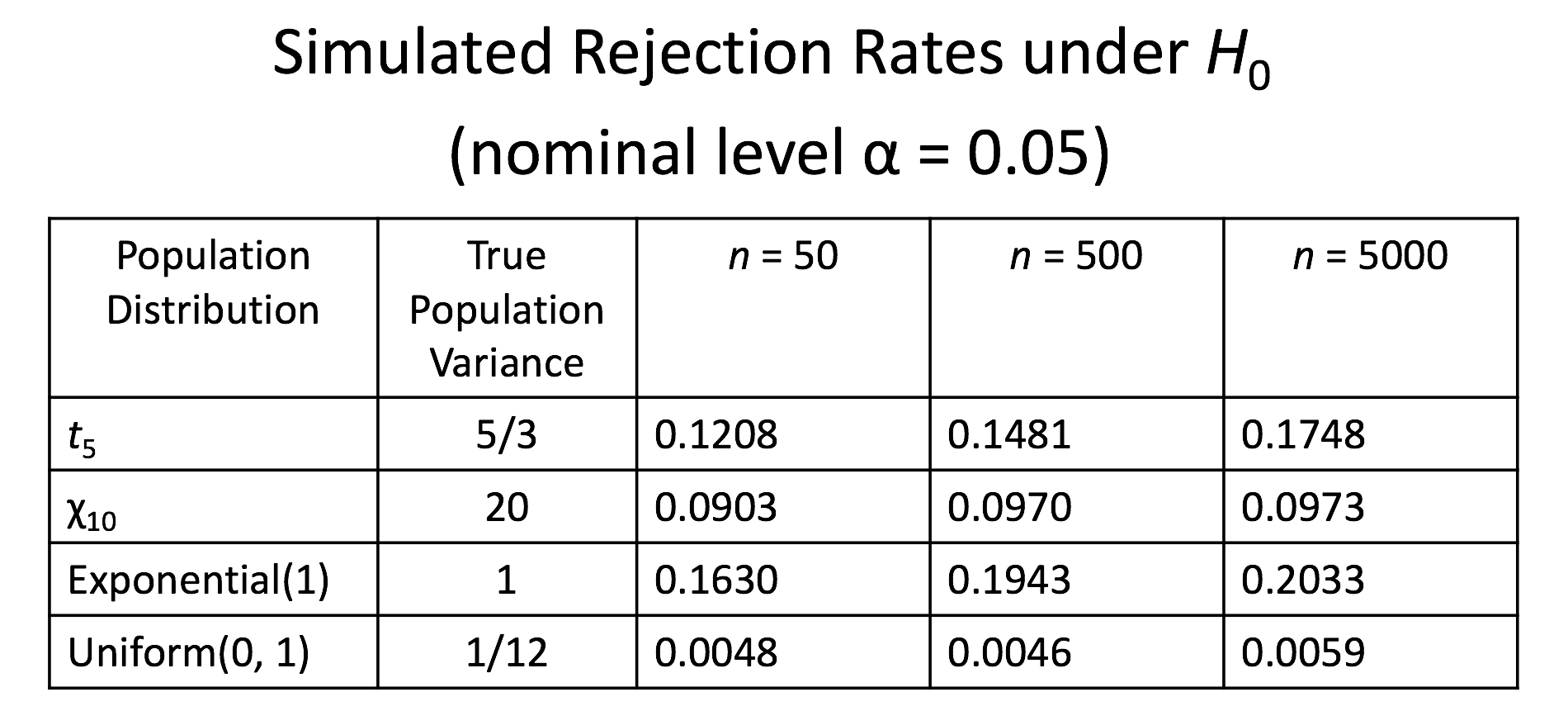So far …
Tests of center
| Test/Procedure | Parameter | Setting |
|---|---|---|
| Z-test | Population mean | |
| t-test | Population mean | |
| Binomial exact test | Population proportion (mean) | |
| Binomial z-test | Population proportion (mean) | |
| Sign test | Population median | |
| Signed Rank test | Population mean/median |
Two tests of scale
Chi-square test of variance
t-test of variance
Chi-square test of variance
Chi-square test of variance
Population: some population distribution
Sample: n i.i.d from population,
Parameter: Population variance
Sample variance
The sample variance,
is an unbiased and consistent estimate of .
Furthermore, if , it can be shown the sampling distribution of is a scaled Chi-square distribution:
Using the sampling distribution to formulate a test
Assume the population distribution is .
Consider the null hypothesis .
Let the test statistic be: What’s the distribution of the test statistic if the null hypothesis is true?
Rejection regions
For a test at level :
- : Reject if
- : Reject if
- : Reject if
or
p-values: Your turn
Shade the area for the p-value when , with

Shade the area for the p-value when , with

p-values: Your turn
Shade the area for the p-value when , with 
p-values: In general
p-value is:
- :
- :
- :
where
In R: = pchisq(x, df = n - 1)
Confidence interval
From inverting test statistic.
% confidence interval
What if the population isn’t Normal
(from Sarah Emerson’s slides F2016)

t-test of variance
t-test of variance
An alternative to the Chi-square test of variance, based on considering a transformed response:
What is , are the independent?
A CLT for the sample variance
The aren’t independent but are weakly dependent, turns out there is a CLT for this case, as long as has finite fourth moment:
Substitute in for
Leads to a t-test
We don’t know the population variance of the (transformed ), so substitute sample estimate for it.
Under null hypothesis
So to test the null , do a t-test on with the null hypothesis .
Performance of t-test of variance
Charlotte’s simulations, rejection rate of for .
| 50 | 500 | 5000 | |
|---|---|---|---|
| Chi-square(10) | 0.12 | 0.069 | 0.055 |
| Exp(1) | 0.177 | 0.084 | 0.072 |
| t(5) | 0.148 | 0.076 | 0.068 |
| Uniform(0, 1) | 0.057 | 0.057 | 0.042 |